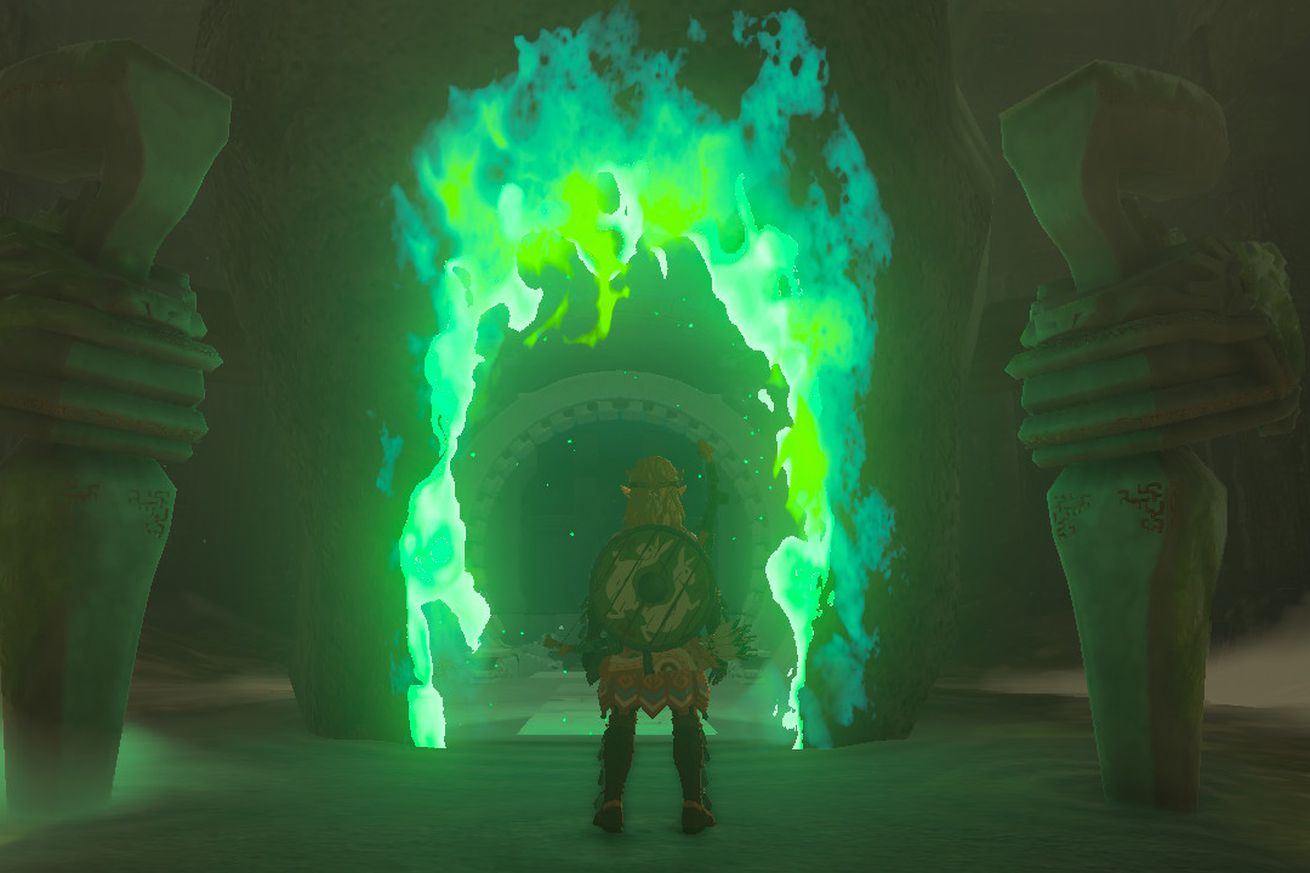
Tears of the Kingdom’s puzzle designers are fantastic trolls
The Zelda developers are trolls, and I love them.
One really well-designed aspect of Tears of the Kingdom is that the game will teach you how to play it. I don’t mean through explicit tutorials; rather, throughout my frankly embarrassing amount of playtime, the game presented to me, either in shrines or in the overworld, obstacles and the tools to surmount them. And every time I solved a puzzle, a more complex version of that same kind of puzzle would pop up later on, forcing me to put together what I learned to take on this new challenge. It makes Tears a kind of Metroidvania in that sometimes my progression is locked until I’ve mastered a certain skill or problem-solving mechanic.
The game will also give you a full lesson contained within a singular puzzle. Take the Iun-Orok shrine, for example. Now, I’m going to spoil this shrine’s solution, so if you want to test your mettle against it unaided, see you later.
The shrine presents you with a handful of items: metal balls, sloped surfaces, and a target at the end of that sloped surface that will unlock a door when hit.
When you see everything assembled, what the puzzle is asking of you seems simple — roll the ball down the slope to hit the target. And that solution works well for the first puzzle:
And the second:
Where the real lesson comes in is for the final puzzle of the shrine. There are three balls of different sizes, a weirdly sloped surface, and a target. Judging from how the first two puzzles were solved, a player would naturally assume the solution to this third one is just as simple — roll ball, hit target. But since the slope curves away from the target, the player is left trying to figure out how to Ultrahand the three balls together and roll them in such a way that they hit the target before they fall into an abyss, forcing a restart.
I had thought that, similar to the solution to the second puzzle in the shrine, I had to balance two of the glued-together balls on the edge of the slope to keep the entire thing from falling off into the abyss, while the third ball stuck out far enough to hit the target. Essentially the “this is the more advanced version of a problem we’ve already given you” part of the lesson. I banged my head against this puzzle for an hour trying to fiddle and finagle the orientation of the balls and where to roll them to make them hit the target. Nothing.
Then I noticed that no matter how I configured the balls, they’d never roll the right way to hit the target. They’d always fall off. Also, the balls could never be positioned correctly to hit the target — they’re too short to reach. The solution to the puzzle, one that I had accepted on faith, was never meant to be its actual solution, despite how the first two parts of this puzzle played out. I felt tricked, like I was a test subject in a case study of human conditioning. “See how the dumbass continues to struggle because we taught her this was how it had to be done?”
This shrine was designed to be a teachable moment — but not in the usual way this game “teaches” you. This was a lesson to never trust the offered “solution” in favor of finding your own way. I’ve already praised the game for its permissiveness. It doesn’t care how you got your answer, only that you got it. And this shrine was a reminder to embrace that “nothing is true, everything is permitted” method of problem-solving over accepting whatever “obvious” solution Tears presents to you.
Once I discovered the “troll,” I cursed loudly, then burst out in maniacal laughter. I wasn’t upset about the time I wasted. (Really, what’re another 60 minutes to the 10,500 I’ve already amassed?) Rather, I was delighted, like I was laughing along with a group of friends after they played a good-natured prank on me. It’s even funnier when you think about the name of the puzzle: “The Right Roll.” The developers anticipated players losing their minds to find that “right roll.” Cheeky bastards. Once I let go of my assumptions, clear-eyed and clearheaded, the solution was indeed simple.
No rolling required.

